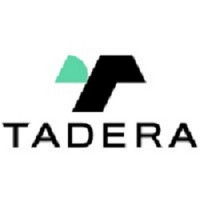Airport Operations Management Platform: The Digital Backbone of Modern Airports

Strong 8k brings an ultra-HD IPTV experience to your living room and your pocket.
In today’s fast-moving aviation world, airports aren’t just about planes taking off and landing—they’re bustling ecosystems that require advanced coordination across departments. From airfield inspections to gate scheduling, lease management to passenger safety, there’s a lot going on behind the scenes.
That’s where an Airport Operations Management Platform comes in.
This blog explores what airport operations management platforms are, why they’re essential, and how companies like TADERA (a GCR Inc. company) are leading the charge in helping airports work smarter, not harder.
What Is an Airport Operations Management Platform?
At its core, an airport operations management platform is a centralized software system that integrates all the essential functions of an airport into one unified solution. Instead of juggling spreadsheets, paper forms, and multiple disconnected systems, staff can manage everything from safety inspections to financial billing from a single dashboard.
Think of it as mission control for an airport.
Why Airports Need a Digital Platform
Airports are high-stakes environments. They need to maintain compliance with strict federal regulations, keep passengers safe, and remain financially viable—all while ensuring smooth day-to-day operations.
A modern platform helps airports:
Increase operational efficiency
Ensure regulatory compliance (like FAA Part 139)
Improve safety tracking and reporting
Streamline financial processes and billing
Enable cross-department collaboration
In short, it allows airport staff to do more with less—a necessity in today’s lean environments.
Key Features of an Airport Operations Management Platform
Let’s break down the essential components of a robust platform, like TADERA’s AirportIQ suite:
1. Operations & Compliance Tools
These are tools that help with inspections, work orders, NOTAMs, and airfield conditions. Staff can complete inspections on mobile devices, even offline, with GIS mapping and real-time syncing when connectivity returns.
Perfect for Part 139 compliance and ongoing airfield maintenance.
2. Safety Management System (SMS)
Airports must manage and mitigate hazards proactively. The SMS module allows for:
Hazard identification
Risk assessments
Root cause analysis
Corrective action tracking
Compliance with FAA and ICAO standards
Having this digitized means faster response times and a culture of safety.
3. Gate and Resource Management
Scheduling gates, tracking flights, and optimizing gate usage are complex. A Gate Manager module offers:
Drag-and-drop gate assignments
Integration with flight data (e.g., SWIM, SSIM)
Real-time visibility into gate usage
Revenue tracking for gate occupancy
This prevents gate conflicts, improves turnaround times, and increases revenue.
4. Business & Revenue Management
Airports rely heavily on lease and tenant revenues. A good platform manages:
Lease agreements
Billing (including utilities and overages)
Payment tracking
GASB compliance
Tenant self-service portals
Automated billing reduces errors and ensures no revenue is lost.
5. Credentialing & Access Control
Airports need to tightly control who accesses secure areas. Credentialing modules streamline the vetting process for badges, background checks, training, and TSA compliance.
Real Benefits of an Integrated Platform
Here’s what airports gain by using a comprehensive system like TADERA’s AirportIQ:
✅ Operational Clarity
No more disconnected systems. All departments operate on a shared platform, making collaboration smoother and miscommunication less likely.
✅ Increased Safety
Digital safety reporting tools and hazard tracking help airports stay ahead of issues. Risk is reduced, and reporting is simplified.
✅ Improved Staff Productivity
With mobile tools and automation, staff spend less time on manual tasks and more time on critical operations.
✅ Financial Transparency
Real-time dashboards and reporting help airports stay on top of billing, tenant management, and compliance.
✅ Data-Driven Decisions
With integrated analytics, airports can make smarter choices—whether it’s rescheduling a gate or allocating resources after a hazard.
TADERA: A Leader in Airport Operations Technology
TADERA, formerly known as GCR Inc., has over 40 years of experience helping airports improve how they operate. The company’s flagship platform, AirportIQ, is trusted by more than 100 airports worldwide, from regional hubs to major international gateways.
Backed by a team of former airport professionals and subject matter experts, TADERA’s tools are built by the industry, for the industry. Their suite is modular, allowing airports to pick what they need and scale as they grow.
In 2023, TADERA joined Modaxo, a global group of transportation tech companies, further enhancing their reach and innovation pipeline.
Future of Airport Platforms
As the aviation world continues to evolve, airport platforms are becoming smarter. Features like AI-powered analytics, predictive maintenance, and machine learning are on the horizon.
TADERA’s upcoming versions of AirportIQ already include:
Enhanced mobile functionality
GIS-based asset management
Unified dashboards for executive reporting
Greater offline capabilities
The future is digital, and TADERA is already there.
Conclusion
In a world where efficiency, safety, and compliance are non-negotiable, an Airport Operations Management Platform is no longer optional—it’s essential.
Platforms like TADERA’s AirportIQ are changing how airports manage their daily operations. From safety inspections to lease billing, from gate assignments to hazard tracking, everything is streamlined into one ecosystem.
Whether you’re a small regional airport or a major hub, investing in the right tools today can future-proof your operations for tomorrow.
Note: IndiBlogHub features both user-submitted and editorial content. We do not verify third-party contributions. Read our Disclaimer and Privacy Policyfor details.


